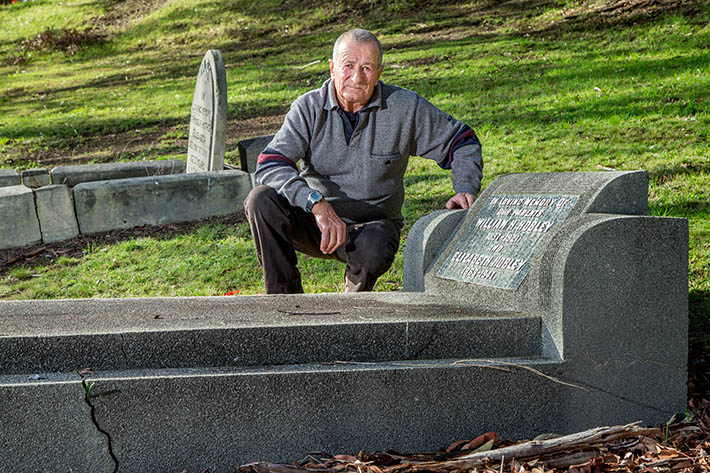
ROSEBUD resident and amateur historian Ray Gibb has spent years researching and documenting the history and people of the Mornington Peninsula.
He believes it is important for us to appreciate the roles of pioneers in making the peninsula what it is today.
A recent Mornington Peninsula Shire decision to name 70 tracks along the foreshore caused him to take a stand. The aim of the naming is to better assist emergency services when incidents occur during the peak camping season.
Tracks within camping areas at Rosebud, Rye and Sorrento managed by the shire will be named after local flora, reptiles, Port Phillip sea life and nautical themes.
While seeing the naming of tracks as a “splendid idea” Mr Gibb believes it also highlights the shire’s “warped view of what consultation is”.
“For example, what’s the point of inviting submissions when it has already decided to name all the tracks after flora, fauna and sea life?
“This is an easy way to get plenty of names, especially as the shire has so little knowledge of, or interest in, the area’s history.”
Mr Gibb says it would be better to name the tracks after the people whose work and effort made a positive difference to the areas in which they lived, such as:
DROMANA: Judge Henry Higgins, of Heronswood, who swam daily at Anthonys Nose, possibly while planning the wording of his 1907 Harvester Judgement that led to the introduction of the basic wage.
MCCRAE: Early environmentalist Henry Burrell, who opposed the clearing of dead wood from the foreshore because he said it protected young trees from the wind.
ROSEBUD: Entrepreneur Tom Chadwick, who encouraged foreshore camping, helping make Rosebud Australia’s favourite seaside resort. Former Brownlow medallist Bert Deacon’s camping “colony” was one of the biggest in the area.
Cr Forest Edmond “Joe” Wood, who, along with Bart Rogers, started the carnival to finance the building of the Soldiers’ Memorial Hall and pushed for a high school and a ferry between Sorrento and Queenscliff.
Fisherman Walter Burnham, who lived on the foreshore opposite Boneo Rd. He and his brother, Charlie, built the ti-tree jetty which featured in two Arthur Boyd paintings.
ROSEBUD WEST: Fisherman Alex Vincent who took over Chatfield’s licence and hut at Rosebud West.
The name of David Cairns’ homestead, Eleanora, which is now part of the Rosebud Hospital.
Market gardening families Wong or Wong-Shing, from the east side of Chinamans Creek, near Mirriam Av, after which Chinamans Creek was named.
Eastbourne, the name of the farm on the late Sidney Smith Crispo’s grants, much of which is now occupied by the Village Glen. It was decided on as a locality name for the area between Rosebud and Rye by the foreshore committee of management in 1926.
TOOTGAROOK: Producer Ben Stenniken, whose property between those of James Trueman and the beach supplied lime for Rye’s first school and hall. It was later reused for the Anglican church on the site. When the lime trade slumped, Stenniken and James Sullivan supplied ti-tree, which had spread from the foreshore, for the ovens of Melbourne’s bakers.
RYE: Teacher Grace Sullivan’s death from Spanish influenza was much-lamented. In her honour a bathing box was built for the pupils, now serving as a foreshore office.
Developer Sydney Smith Crispo, who established the village of Manners Sutton (later renamed Canterbury) at the time early lot buyers Blair and Duffy were arguing about a selection at Rye. At Crispo’s suggestion it was sold as the village of Sorrento in 1869. Crispo built the original Canterbury jetty.
“The historical societies could no doubt suggest the rest of the names needed,” Mr Gibb said.
First published in the Southern Peninsula News – 26 July 2016



